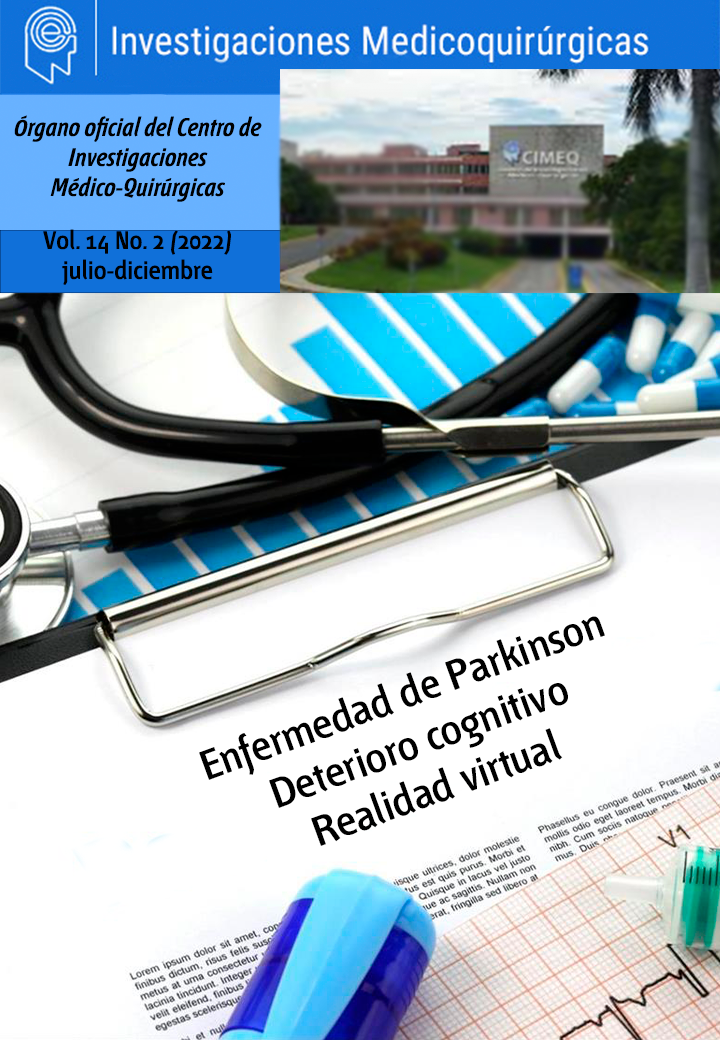The integration of the reproduction of models in patients with brain damage. Strategic of Intervention
Keywords:
memory viso-space, qualtitative, compensation, brain injury, deficits in integration, system activitiesAbstract
Introduction: During the perception of an object, a complex system of temporary connections, which reflects the links and relationships among the objects, their parts and properties arise in the brain.
Methods: A pedagogical pre-experiment study was carried out with a group of 20 patients. A battery was used to evaluate the neuropsychological visual memory, viso-construction, perceptual speed and motor, attention, executive functions and initial verbal (NEUROPSI) intelligence and end to verify that memory deficit, compared the results and the percent of improvement.
Results: The age of the studied group range was between 21 - 55 years. The main feature found was the lack of integration in the reproduction of the model by the latent attention deficit. A disorder in the fixation of memory mechanisms was one of the greatest difficulties presented. An improvement in each variable controlled in relation to the evaluation prior to treatment was obtained.
Conclusions: The system of activities designed influenced positively in memory compensation viso - space in investigated patients.
References
Traumas Craneoencefálicos. 1 2011 [cited 2008 Jul 29]; Available from: URL: http://www.neurorehabilitacion.com/trauma_craneoencefalico.htm
Arango Lasprilla J. Rehabilitación neuropsicológica Mexico: Manual Moderno; 2006.
Ardila A, Ostrosky Solís F. Diagnóstico del daño cerebral. Enfoque neuropsicológico. Mexico: Trillas; 1993.
Ardila A. Estructura de la actividad cognoscitiva: hacia una teoría neuropsicológica. Neurosychologia Latina 1995; 1:21-32.
Ardila A, Rosselli M. Neuropsicología clínica. México: Manual Moderno; 2007.
Burin D, Drake M, Harris P. Evaluación neuropsicológica en adultos. Argentina: Paidós; 2007.
Burin D, Duarte D, Prieto G, Delgado A. Memoria de trabajo viso-espacial y aptitud de Visualización. Cognitiva 2004; 16:95-113.
Dalmas F. Neuropsicología de la memoria. In: Dalma F, editor. La memoria desde la neuropsicología. Montevideo: Roca Viva; 1993. p. 21-42.
Gómez L. Plasticidad cortical y restauración de funciones neurológicas: una actualización sobre el tema. Revista de Neurología 2000; 31:749-56.
Grodzinzki G, Diamond R. Frontal lobe functioning in boys with attention deficit hyperactivity disorder. Developmental Neuropsychology 2002 ;8.
Junqué C, Bruna O, Mataró M. Traumatismos craneoencefálicos. Un enfoque desde la Neuropsicología y la Logopedia. Barcelona: Masson; 2003.
Liepman H, Maas O, Linksseitieger Fv. 2011.
Logie R. Visuo- spatial working memory. Hove: Lawrence Erlbaum Assoc; 1995.
Ostrosky Solís F, Ardila A, Rosselli M. NEUROPSI: a brief neuropsychological test battery in Spanish with norms by age and educational level. J Int Neuropsychol Soc 1999; 5(5):413-33.
Rothi L, Heilman K. Acquisition and retention of gestures by apraxia patients. Brain Cognition 1984; 3:426-37.
Waylett Rendall Y. Reentrenamiento y rehabilitación cognitivo-perceptivas.Madrid: Médica Panamericana; 2005.
Downloads
Published
How to Cite
Issue
Section
License
The authors retain copyright and all unrestricted publication rights.
Medicoquirúrgicas Research is licensed under the Creative Commons Attribution-Noncommercial 4.0 International License (CC BY-NC 4.0) and follows the SciELO Publishing Schema (SciELO PS) for publishing in XML format.
You are free to:
- Share — copy and redistribute the material in any medium or format.
- Adapt — remix, transform, and build upon the material.
The license cannot revoke these freedoms as long as you follow the license terms.
Under the following terms:
- Attribution — You must give appropriate credit, provide a link to the license, and indicate if changes were made. You may do this in any reasonable manner, but not in any way that suggests the licensor endorses you or your use.
Non-Commercial — You may not use the material for commercial purposes.
No Additional Restrictions — You may not apply legal terms or technological measures that legally restrict others from making any use permitted by the license.
Notices:
You do not have to comply with the license for elements of the material in the public domain or where their use is permitted by an applicable exception or limitation.
No warranties are given. The license may not give you all the permissions you need for your intended use. For example, other rights such as publicity, privacy, or moral rights may limit how you use the material.



